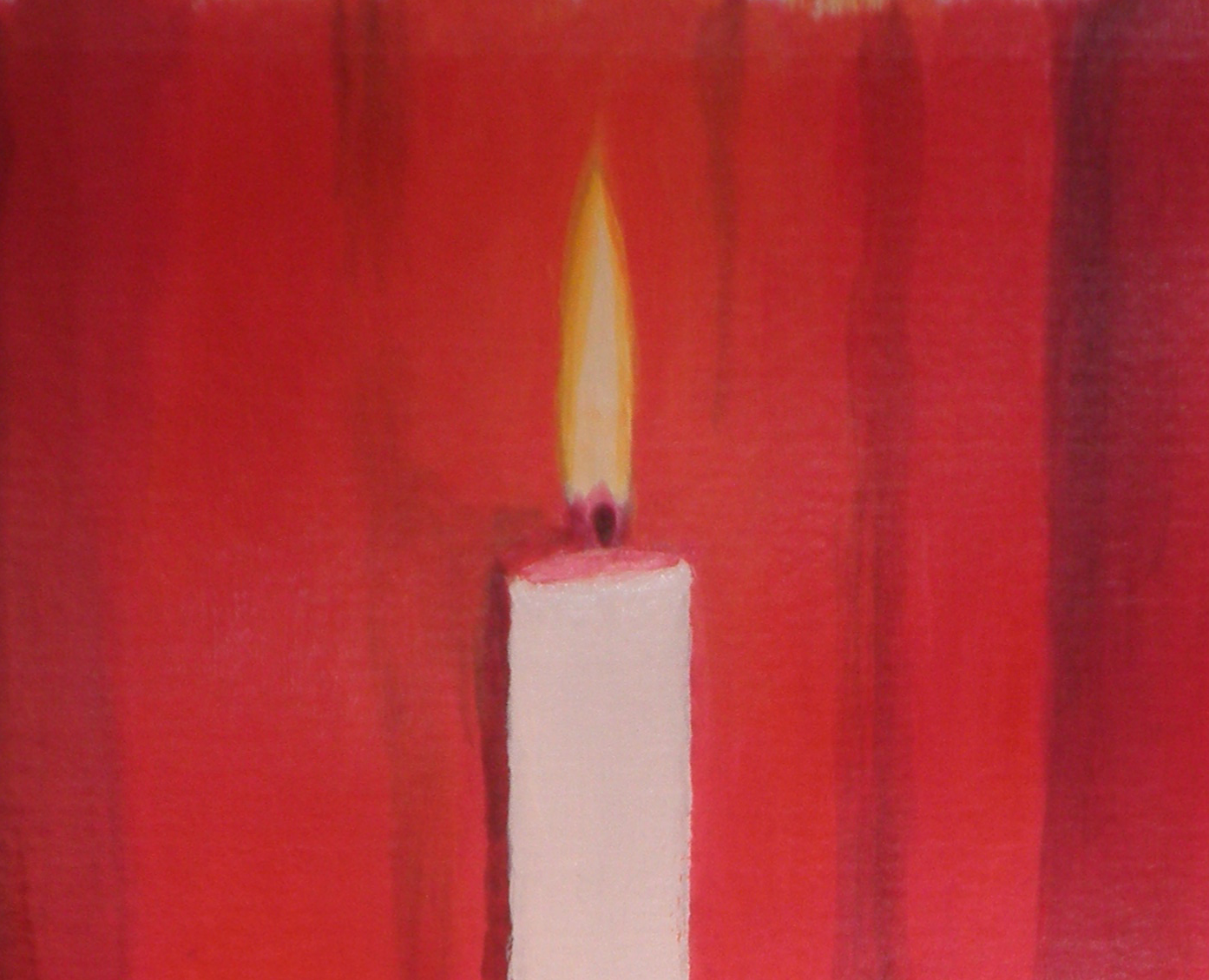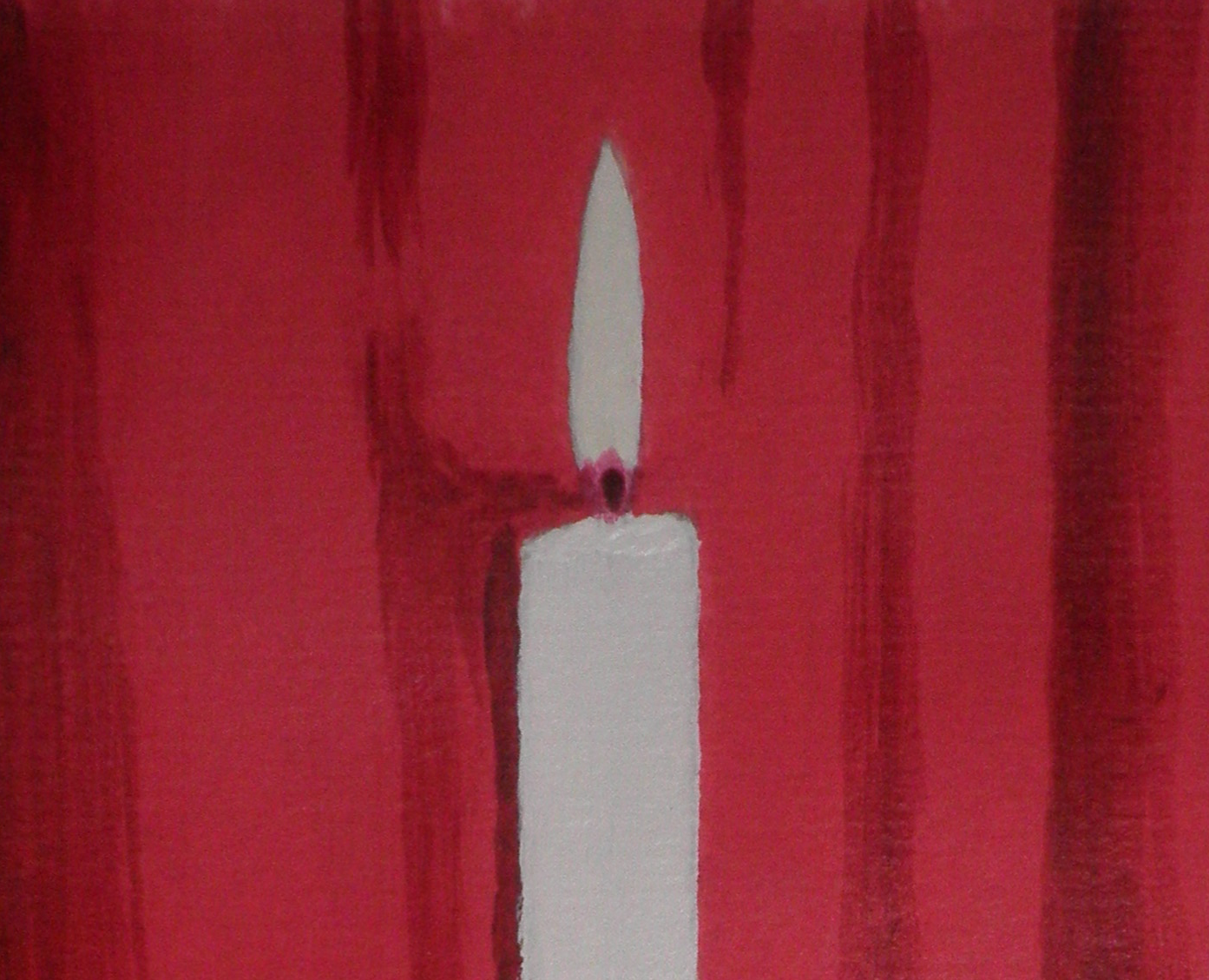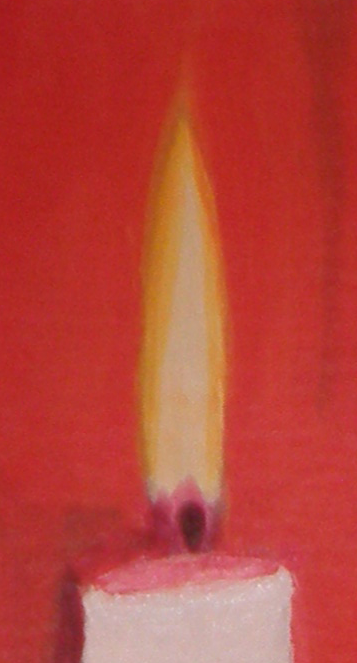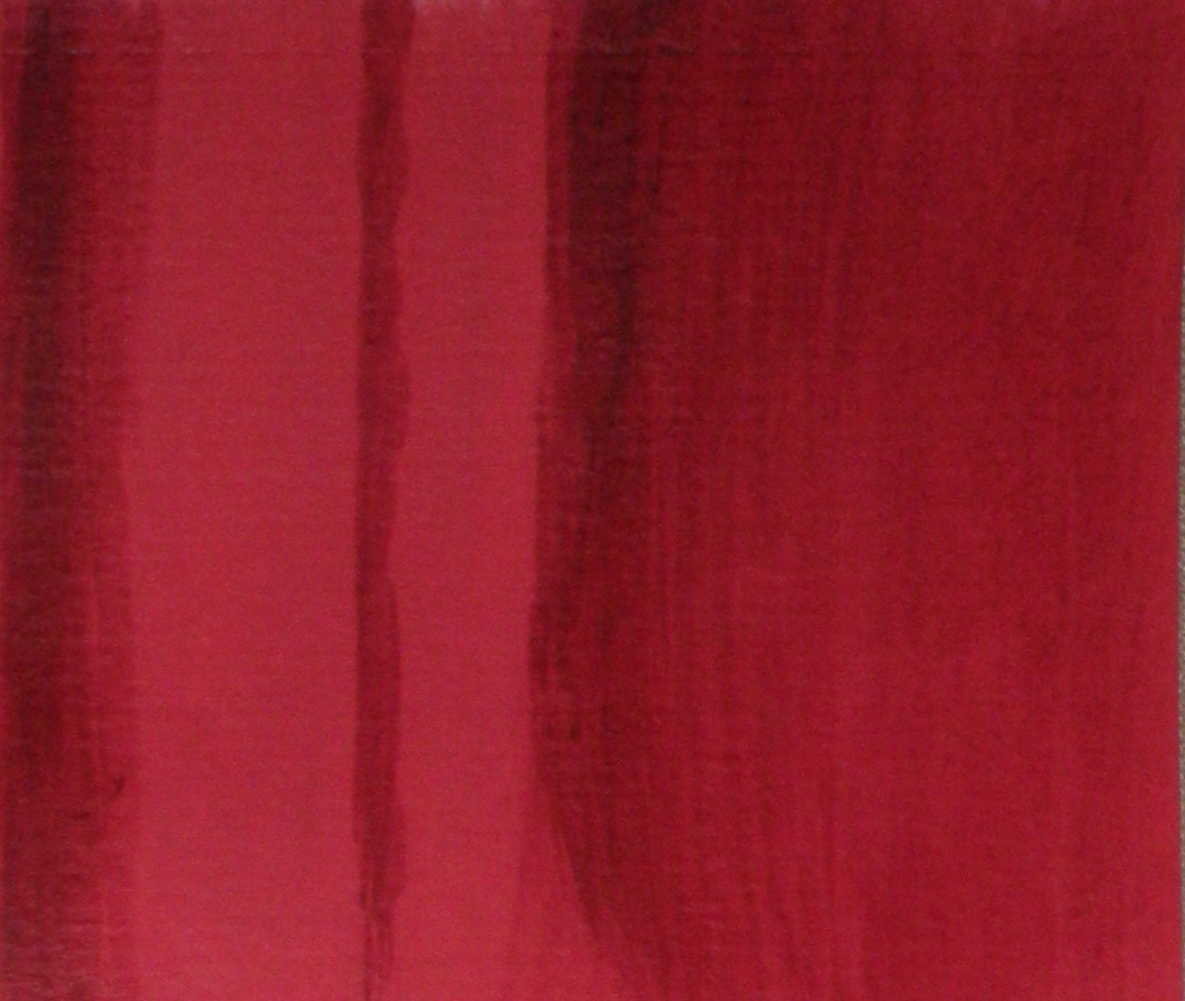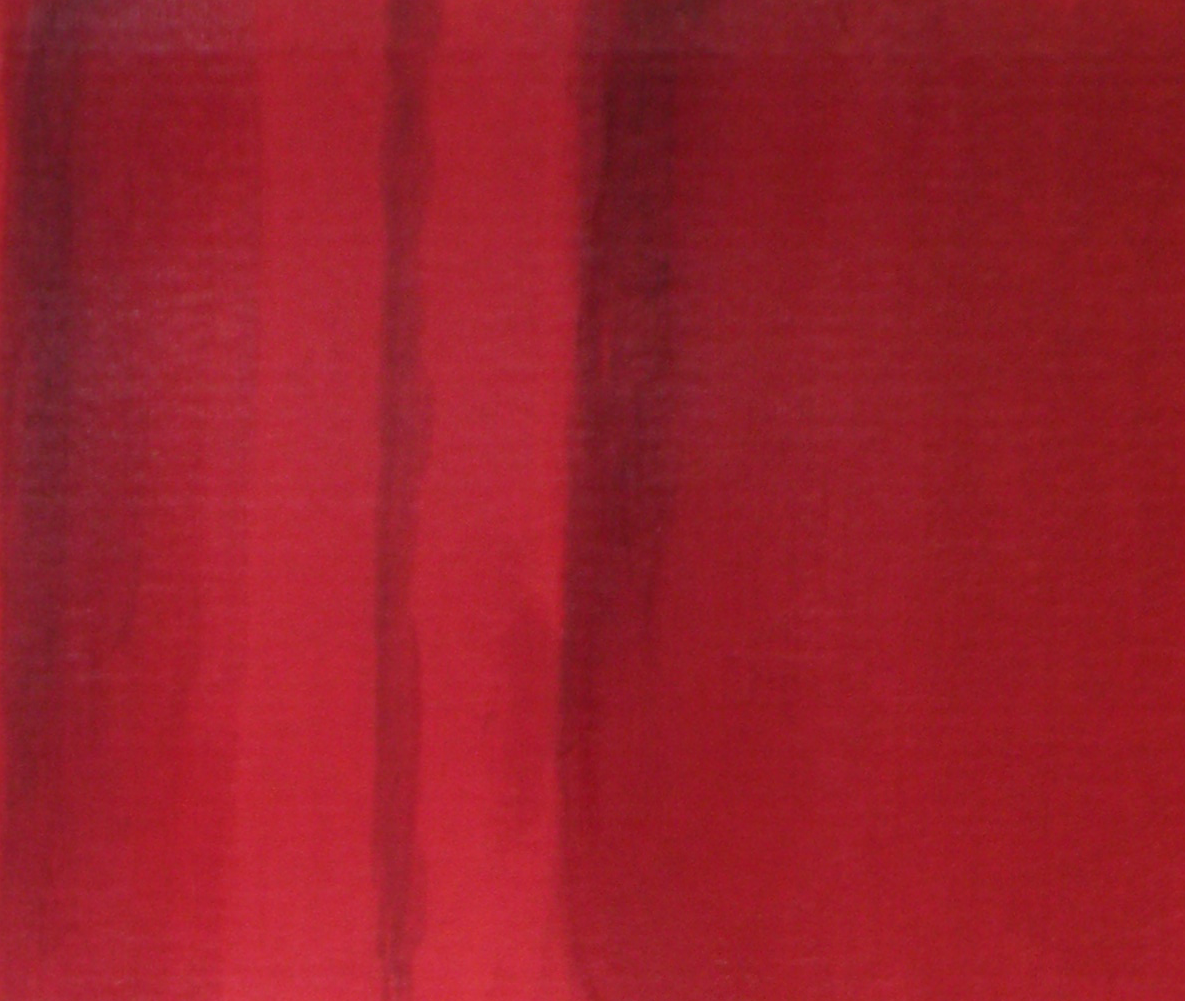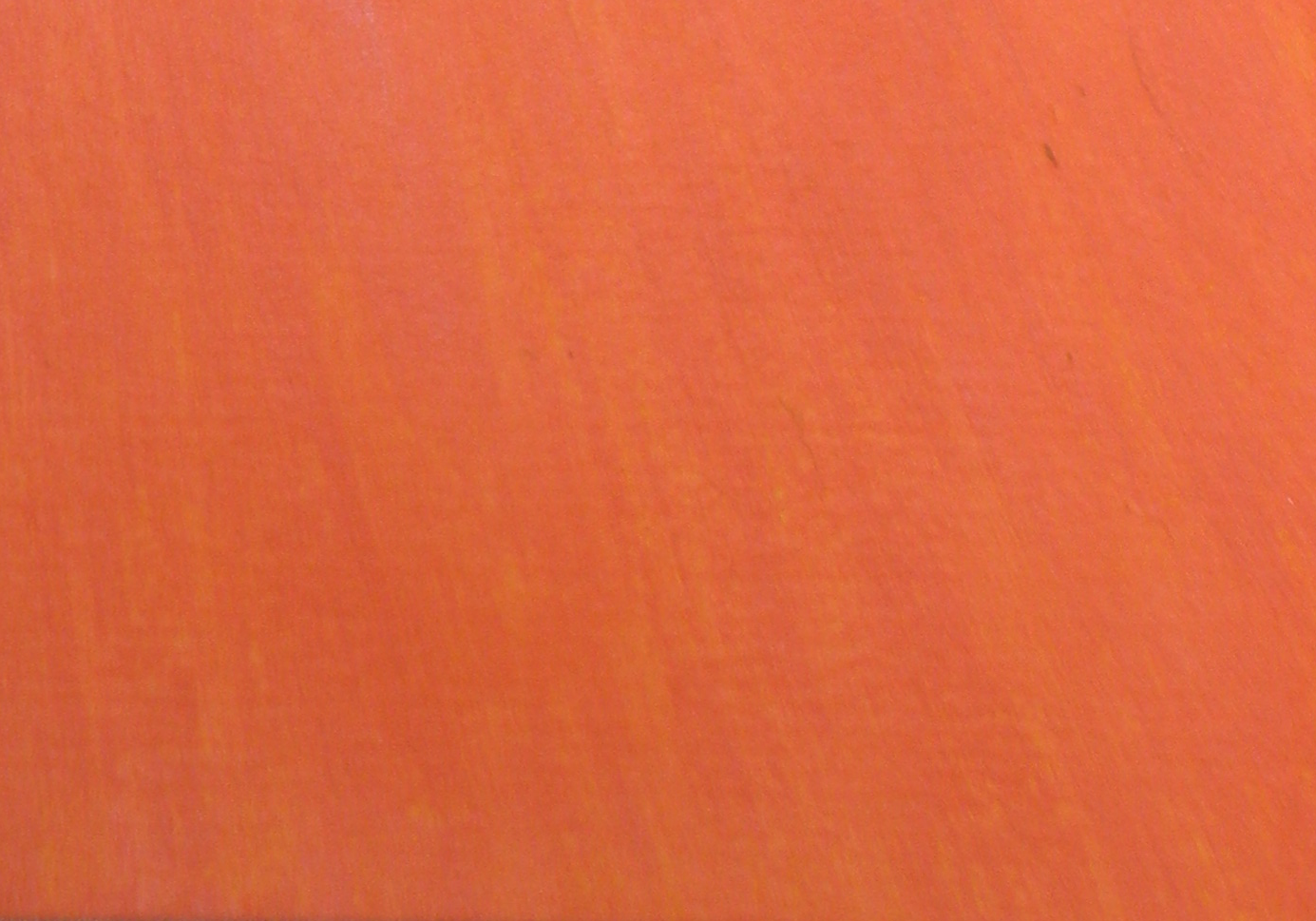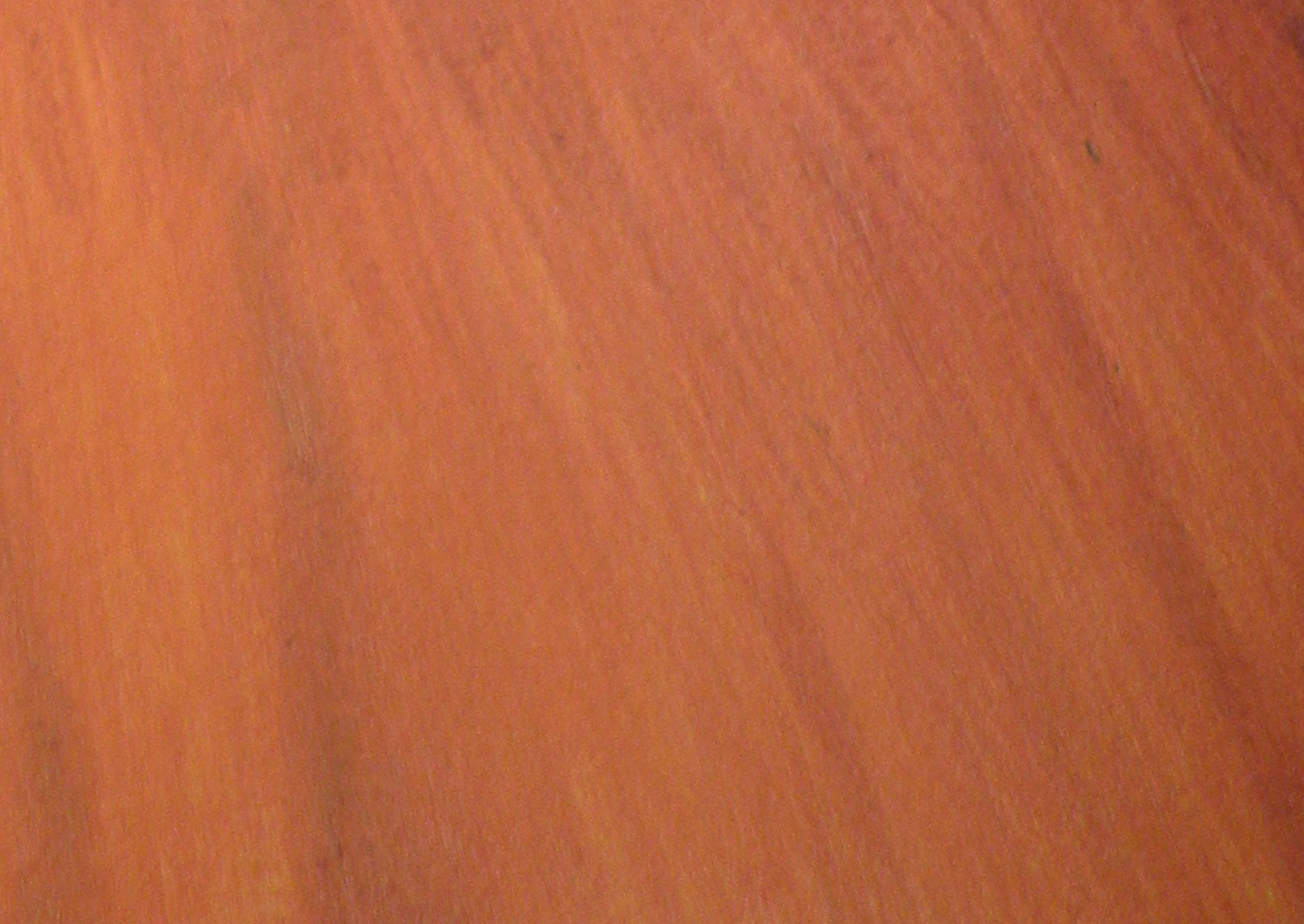Attempting to draw or paint a picture can often result in the image not looking right because the
components within it are not the right size and hence shape in relation to each other. When the
components are, that is what is meant by being "in proportion", or, "in the right proportion".
To achieve good proportions, if you are not instinctively very good at this, a little measurement
is needed. But you don't need a ruler!

Firstly, choose a simple scene that you
want to draw or paint.
I am going to use this photo that I took of a
candle as an example.
You can go straight into drawing or painting
your picture if you are confident, but some-
times it's useful to draw in a foundation
sketch, which is what I will do.
So, using a lead pencil, I'll draw in the main
guidelines for positioning the elements
within the "frame" (edges) of the picture.
The main methods used involve -
- dividing a line into 1/2, 1/3's etc.
- horizontal and vertical lines
- dashes / dots
whether drawn / painted, or in your mind,
and,
- using your pencil or paint-brush to
measure with
Method for drawing a foundation sketch
 1. Main horizontal line
1. Main horizontal line
Decide which is the main horizontal line in
the scene, if there is one. Here, it is the
bottom edge of the curtain.
Decide where you want it to go in the
"frame" of your canvas, piece of paper, etc.
and draw it in.
I am going to do the same as in the photo.
Placing the horizontal line
Estimate where 1/2 way is down each side
of the photo.
Estimate where 1/2 way is down each side
of your "frame" and make a mark..........(1)
The horizontal line is below 1/2 way on the
photo.
To estimate where, estimate 1/2 way
between (1) and the bottom of the photo,
down each side.
Then estimate this on each side of the
"frame" and make a mark......................(2)
I estimated on the photo that the horizontal line is 1/3 down, from (1) to (2).
So, estimate this down each side of your "frame" and make a mark......................(3)
Then, draw your line from one side to the
other at (3).
 2. Main vertical line
2. Main vertical line
Decide which is the main vertical line in
your scene, if there is one. Here it is the
line through the centre of the candle.
Decide where you want it in the "frame" of
your canvas, piece of paper, etc. and draw
it in.
I am going to do the same as in the photo.
Placing the vertical line
Using the same method as above,
ie. dividing the top and bottom edges of the
"frame" by 1/2, 1/3's etc., make these marks -
- 1/2.................................................(4)
- 1/2 way between (4) and left side of
"frame"...........................................(5)
- 1/2 way between (4) and (5).............(6)
Draw your line from top to bottom at (6).

3. The top of the candle
Dividing the sides of the "frame", make
these marks -
- 1/2 way between (1) and the top edge of
the "frame".....................................(7)
- 1/3 up, from (7) to the top edge of
the "frame".....................................(8)
I estimated that the width of the candle was
1/3 each side of (6), towards (4) and (5).
I estimated by eye (in my mind) where this
would be in my "frame" and drew in the line.

4. The candle width
Make the marks at -
- 1/3 each side of (6) towards (4) and (5)
.....................................................(9 a,b)
Draw in the length of the candle, following
the imaginary vertical lines that run from
(9a) and (9b) at the top to those at the bottom.
I have estimated that it ends about 1/3 to
1/2 way down from (3) to (2).
Estimate this position by eye in your
"frame" and end your vertical lines there.

5. The saucer position
Using small dashes or dots, place marks
at these positions -
- a little less than 1/2 way from (3) to (1)
on each side of the candle...............(10)
- a little below (2) on (6)......................(11)
- 1/2 way between left edge of "frame" and
(9a) (left side of candle), and at the
same time also, 1/2 way between an
imaginary horizontal line going through
(10) and an imaginary horizontal line
going through (11).........................(12a)
Use your pencil to measure between (12a)
and (9a) along an imaginary horizontal line,
by laying it on the paper etc. with the tip at
(12a) and pinch your fingers on the pencil
to hold it, with the edge of your finger and
thumb where (9a) is.
Then without moving your fingers, lay the
pencil down on the paper etc. along the
same imaginary horizontal line, with the tip at (9b) (the right side of the candle) and see where the edge of your finger and thumb are.
Make a mark there...........................(12b)
If you are painting, you can use your paint brush for this. When you are sitting out of
arms reach of your subject, you can still
measure in this way by holding up your
pencil or paint-brush in front of you to
compare the sizes of the elements within
your scene. Use a dominant line as your
reference length, and compare the sizes of
other lines / areas to this.
 6. The saucer
6. The saucer
Estimate the shape of the saucer by eye
from the photo. Join all the dashes / dots approximating that shape as closely as possible.

7. Adjustments
I compared the drawing to the photo to
see if it looked the same.
Candle width
I estimated that the candle width in the
drawing was probably a little too wide, so I
thinned it down a little. I don't think I
needed to, though!
Back of saucer
I dropped this down a little.

8. The flame
Estimate on the photo by eye, 1/2 way
between the top of the candle and the top
of the photo.
Estimate on the photo by eye, 1/2 way
between this point and the top of the photo,
ie. 3/4 from the top of the candle to the
top of the photo.
I estimated that the top of the flame comes
just under this 3/4 mark.
On the drawing, go through these same
steps and mark where the top of the flame
goes.
For the width of the flame, estimate on the
photo by eye where the width of the flame
falls, from the centre of the flame to
the width of the candle, (9a) or (9b).
I estimate that to be about 1/3.
On the drawing imagine in your mind, a vertical line going down along this point and mark in a dash or dot to show the side of the flame. Do the same for the other side of the flame.
Look at the flame in the photo to see it's shape, then draw it in the drawing, joining
it up to the dashes / dots.
Mine doesn't look the same as the photo,
as the candle width is too thin.
 9. The base of the candle
9. The base of the candle
Estimate on the photo by eye, where the
base of the candle comes, between the top
and the bottom of the saucer.
I estimate it to be about 1/2 way.
Make a mark there, and draw in the base
of the candle.

10. The base of the right fold of the bow
Estimate on the photo by eye, where this
base falls.
I estimate that it runs from the candle
base, along an imaginary horizontal line.
Estimate on the photo by eye, how far out
the fold goes.
I estimated that the distance from the edge
of the saucer to the fold, is about the same
as 1/2 the distance between the edge of
the candle and the edge of the saucer.
Keeping these things in mind, and looking
at the photo to get a good idea of it's
shape, draw the base of the right fold of the bow, making sure it follows these estimations.

11. The folded edge of the right fold of
the bow
Estimate on the photo by eye, where the
top point of the fold falls in relation to the
saucer.
I estimated that if you imagine a vertical
line going down from the point it will pass
very close to the side edge of the saucer.
With your pencil on the photo, measure the
length of the base of the fold (which was
drawn in the last section above), then with-
out moving your finger positions on the
pencil, move it and lay it along the folded
edge of this fold of the bow and see how
it's length compares.
I estimated that the fold is 2/3 the length of
the base.
So, lay your pencil along the base of the
fold of the bow on the drawing. Measure
it's length. Then without moving the
position of your fingers on the pencil, move
the pencil so that it's point is at the end
point of the base.
And at the same time, move the pencil
so that the 2/3 point of your measurement
falls along the imaginary vertical line
down past the edge of the saucer.
See where this is on the drawing, and
make a mark there.
Then, looking at the photo to see how the
folded edge looks, draw it in, making sure
that it starts at your mark and ends at the
point of the base.
12. The top edge of the right fold of the
bow
Look at the top edge of the right fold of the
bow in the photo, and then draw it's shape
in the drawing as closely as you can to
what you saw.
13. Adjustment
I compared the drawing to the photo and
the right fold of the bow looked to be a little
large, so I shortened the length of the base
a little, and hence had to re-draw in the line
of the folded edge.
 14. The position of the left fold of the
bow
14. The position of the left fold of the
bow
Another method to position a shape, is to
put dots where the points of the shape
should go.
Look at the photo and estimate where this
part of the bow begins.
I estimate, close to the vertical centre of
the candle, and a little higher than the
bottom of the candle.
Place a dot there on your drawing.
Similarly, for the beginning of the other
side, I estimate, that it is on the vertical
centre line through the candle, and a little
below the base of the candle.
Place a dot there on your drawing.
For the top corner of the fold, I estimate
this to be a little below the base of the
curtain, and a little beyond an imaginary
vertical line passing alongside the left edge
of the saucer.
Place a dot there on your drawing.
For the bottom corner of the fold, I estimate this to be a little above an imaginary horizontal line passing alongside
the bottom of the saucer, and a little beyond an imaginary vertical line coming down from the top corner dot.
Place a dot there on your drawing.

15. The left fold of the bow
Look at the photo to see the shape of each
line of this fold of the bow, and draw them
into the drawing, making sure that they
connect with the dots.
16. The rest of the picture
Continue in this way, using these methods.
You can use where lines cross as
reference points, to estimate 1/2, 1/3's etc.
of the line between them. Such as the
lower edge of the saucer between the two
folds of the bow.
The object is to draw in the main outlines of all the objects.

17. The completed foundation sketch
Adjustments
Check one last time that everything in your
drawing looks the same as in the photo.
I made the candle width a little thicker so
that it is probably back to the original width.
Tidying up
Rub out all the unnecessary lines.
- the vertical line through the centre of
the candle etc.
- the horizontal line of the bottom of the
curtain where it goes through the
saucer
- the marks around the edge of the
"frame"
And there is the completed drawing, with
everything in proportion.
Yours may not look the same as mine, but
remember that everyone has their own style.
(c) Katherine Stuart 2014

